Hybrid Concept Cars, The Future Is Now
So a recent article on yahoo.com's main page is all about green concept cars. It has some of the main players and a lot of pretty pictures. Here are the cars listed with a brief description as to alleviate you having to go to another site to read all about them. I am saving you time, thus saving you money as well so you can save it up to buy one of these awesome cars when the time is right.
I am going to break these down into three categories: Drivable/hey that's cool, Wouldn't be caught dead in this, and Didn't we already do this?
Um, Alex, I would like to start with Didn't We Already Do This for 200 please.
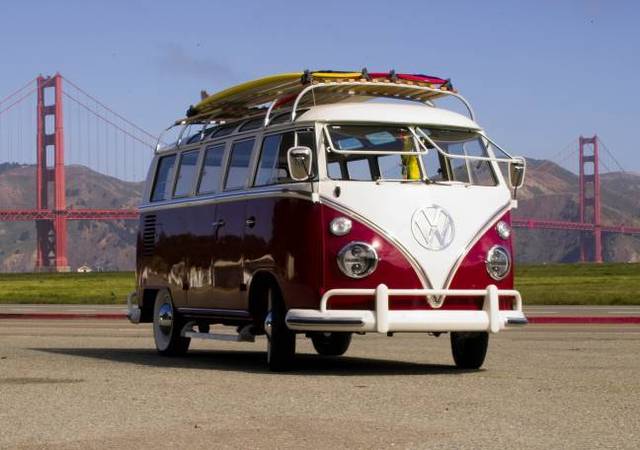 Ladies and gentlemen, I would like to introduce to you the 2010 VW Microbus, um I mean Chameleon. So, yeah, apparently the late 60's are back and we are all going to be peace loving pot smoking patchouli smelling hippies. At least we have the perfect vehicle for it, I mean this "new" vehicle is all electricity powered with 10 count them 10 30v batteries in the floor to power the vehicle. Oh, the surf boards are thrown in free of charge, they are fitted with solar panels for recharging the batteries. This is the vehicle for those fifty somethings to relive their youth in a perfectly environmentally friendly manner.
Second place in the "Didn't we already do this" catagory is BMW X3:
Ladies and gentlemen, I would like to introduce to you the 2010 VW Microbus, um I mean Chameleon. So, yeah, apparently the late 60's are back and we are all going to be peace loving pot smoking patchouli smelling hippies. At least we have the perfect vehicle for it, I mean this "new" vehicle is all electricity powered with 10 count them 10 30v batteries in the floor to power the vehicle. Oh, the surf boards are thrown in free of charge, they are fitted with solar panels for recharging the batteries. This is the vehicle for those fifty somethings to relive their youth in a perfectly environmentally friendly manner.
Second place in the "Didn't we already do this" catagory is BMW X3:

 You know, they say that if you never change in business, you are insane. Well, BMW didn't listen. This car looks neither futuristic nor retro, meaning it just looks kind of now. It's not even trying very hard to be environmentally friendly. Instead of using a battery it incorporates a superconductor, which provides energy in short bursts. It gets an "A" for effort but nothing else. This concept car is only getting about 20% better millage than most of the cars that BMW currently produces (none of which are hybrids). This is a poor contending mom-mobile in the concept car to the future race.
Third Place in this category is the GM Sequel.
You know, they say that if you never change in business, you are insane. Well, BMW didn't listen. This car looks neither futuristic nor retro, meaning it just looks kind of now. It's not even trying very hard to be environmentally friendly. Instead of using a battery it incorporates a superconductor, which provides energy in short bursts. It gets an "A" for effort but nothing else. This concept car is only getting about 20% better millage than most of the cars that BMW currently produces (none of which are hybrids). This is a poor contending mom-mobile in the concept car to the future race.
Third Place in this category is the GM Sequel.
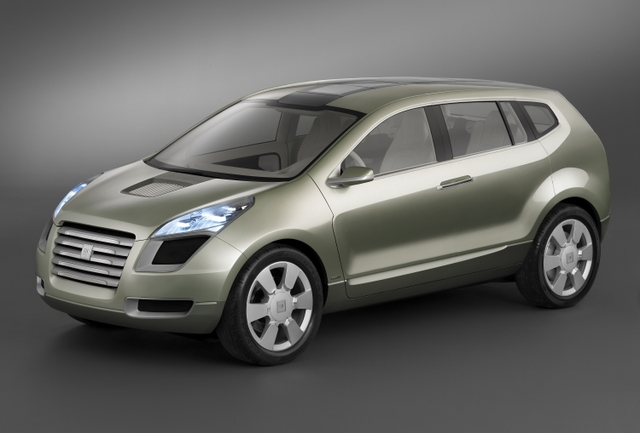 What is cool about this vehicle is that it runs on a hydrogen fuel cell and the fact that most of this car's engine components are located underneath the car and not under the hood. It does make for a roomier car but the looks are just kind of standard, this car does not make me think that I am living in the 21st century at all. I wonder what it is the sequel to? Most movie sequels are not good, they are almost never as good as the original. Just saying, it doesn't look good for this sequel, at least in my book.
Check back later for the other two categories, it is sure to get interesting.
What is cool about this vehicle is that it runs on a hydrogen fuel cell and the fact that most of this car's engine components are located underneath the car and not under the hood. It does make for a roomier car but the looks are just kind of standard, this car does not make me think that I am living in the 21st century at all. I wonder what it is the sequel to? Most movie sequels are not good, they are almost never as good as the original. Just saying, it doesn't look good for this sequel, at least in my book.
Check back later for the other two categories, it is sure to get interesting.
 Ladies and gentlemen, I would like to introduce to you the 2010 VW Microbus, um I mean Chameleon. So, yeah, apparently the late 60's are back and we are all going to be peace loving pot smoking patchouli smelling hippies. At least we have the perfect vehicle for it, I mean this "new" vehicle is all electricity powered with 10 count them 10 30v batteries in the floor to power the vehicle. Oh, the surf boards are thrown in free of charge, they are fitted with solar panels for recharging the batteries. This is the vehicle for those fifty somethings to relive their youth in a perfectly environmentally friendly manner.
Second place in the "Didn't we already do this" catagory is BMW X3:
Ladies and gentlemen, I would like to introduce to you the 2010 VW Microbus, um I mean Chameleon. So, yeah, apparently the late 60's are back and we are all going to be peace loving pot smoking patchouli smelling hippies. At least we have the perfect vehicle for it, I mean this "new" vehicle is all electricity powered with 10 count them 10 30v batteries in the floor to power the vehicle. Oh, the surf boards are thrown in free of charge, they are fitted with solar panels for recharging the batteries. This is the vehicle for those fifty somethings to relive their youth in a perfectly environmentally friendly manner.
Second place in the "Didn't we already do this" catagory is BMW X3:

2009 BMW X3
VS:
2007 BMW x5
 You know, they say that if you never change in business, you are insane. Well, BMW didn't listen. This car looks neither futuristic nor retro, meaning it just looks kind of now. It's not even trying very hard to be environmentally friendly. Instead of using a battery it incorporates a superconductor, which provides energy in short bursts. It gets an "A" for effort but nothing else. This concept car is only getting about 20% better millage than most of the cars that BMW currently produces (none of which are hybrids). This is a poor contending mom-mobile in the concept car to the future race.
Third Place in this category is the GM Sequel.
You know, they say that if you never change in business, you are insane. Well, BMW didn't listen. This car looks neither futuristic nor retro, meaning it just looks kind of now. It's not even trying very hard to be environmentally friendly. Instead of using a battery it incorporates a superconductor, which provides energy in short bursts. It gets an "A" for effort but nothing else. This concept car is only getting about 20% better millage than most of the cars that BMW currently produces (none of which are hybrids). This is a poor contending mom-mobile in the concept car to the future race.
Third Place in this category is the GM Sequel.
 What is cool about this vehicle is that it runs on a hydrogen fuel cell and the fact that most of this car's engine components are located underneath the car and not under the hood. It does make for a roomier car but the looks are just kind of standard, this car does not make me think that I am living in the 21st century at all. I wonder what it is the sequel to? Most movie sequels are not good, they are almost never as good as the original. Just saying, it doesn't look good for this sequel, at least in my book.
Check back later for the other two categories, it is sure to get interesting.
What is cool about this vehicle is that it runs on a hydrogen fuel cell and the fact that most of this car's engine components are located underneath the car and not under the hood. It does make for a roomier car but the looks are just kind of standard, this car does not make me think that I am living in the 21st century at all. I wonder what it is the sequel to? Most movie sequels are not good, they are almost never as good as the original. Just saying, it doesn't look good for this sequel, at least in my book.
Check back later for the other two categories, it is sure to get interesting.
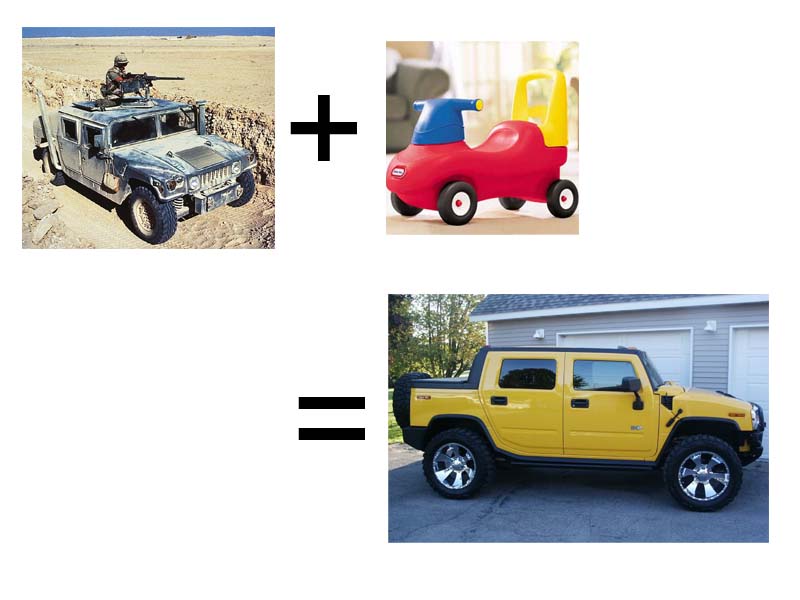
 The system, by
The system, by  Other large Great Lakes cities like Chicago, Cleveland, and Buffalo could take advantage of a system like this as well. Add in a few off-shore wind farms and the Rust Belt could take a real lead in green technology that makes use of the local geography. So what do you say, Cleveland?
Other large Great Lakes cities like Chicago, Cleveland, and Buffalo could take advantage of a system like this as well. Add in a few off-shore wind farms and the Rust Belt could take a real lead in green technology that makes use of the local geography. So what do you say, Cleveland?
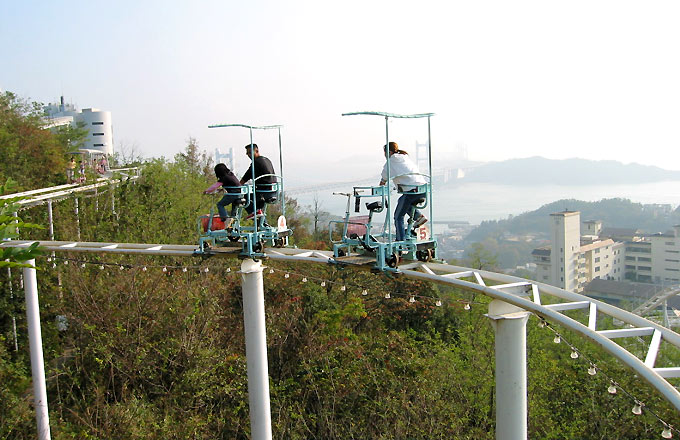 So, as you may or may not know, here at unsought we are really kind of environerds, some more than others. Either way, while stumbling on the internet I came across a page about an
So, as you may or may not know, here at unsought we are really kind of environerds, some more than others. Either way, while stumbling on the internet I came across a page about an  Basically the premise of this roller coaster is that you are pedaling instead of having it run off of gasoline or electricity. As you may or may not know,
Basically the premise of this roller coaster is that you are pedaling instead of having it run off of gasoline or electricity. As you may or may not know, 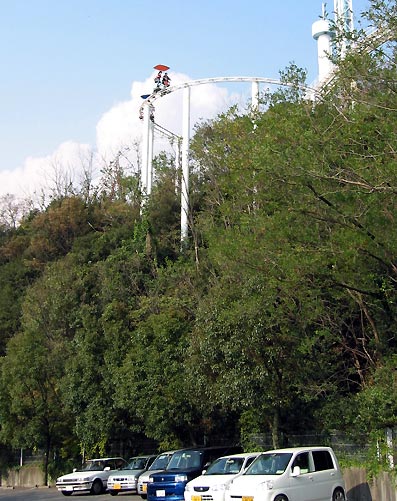 This ride is apparently located in a Japanese amusement park on the island of
This ride is apparently located in a Japanese amusement park on the island of  The Japanese writing on the picture says chiyupikosataa, the second part of that if you sound it out is coaster. From what I gathered from the site, the mascot of this amusement park is a mouse called Chiyupi, so this probably a coaster named after it.
I don't really think this will catch on with American audiences, but I know that if I go back to Japan, hopefully in October, that I will make it a point to try and find this park just to ride this ride. If I do, I will definitely write another article on this coaster with a first hand account of if it was really worth all the effort and fear. Until then, please enjoy the fantastic amusements that are located in your general vicinity.
The Japanese writing on the picture says chiyupikosataa, the second part of that if you sound it out is coaster. From what I gathered from the site, the mascot of this amusement park is a mouse called Chiyupi, so this probably a coaster named after it.
I don't really think this will catch on with American audiences, but I know that if I go back to Japan, hopefully in October, that I will make it a point to try and find this park just to ride this ride. If I do, I will definitely write another article on this coaster with a first hand account of if it was really worth all the effort and fear. Until then, please enjoy the fantastic amusements that are located in your general vicinity.